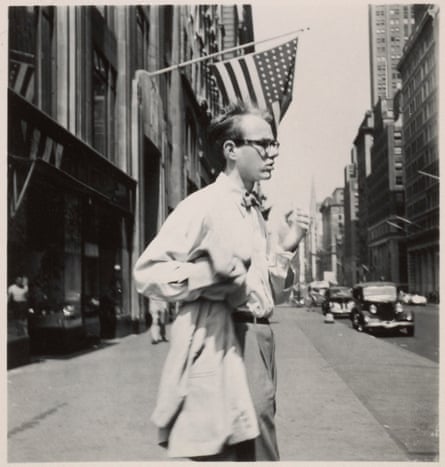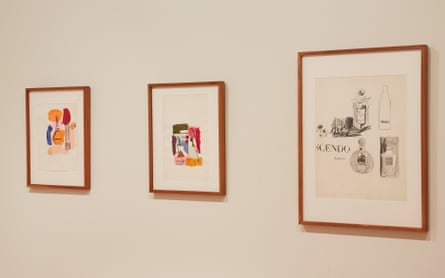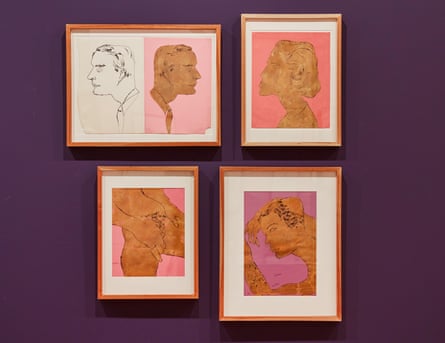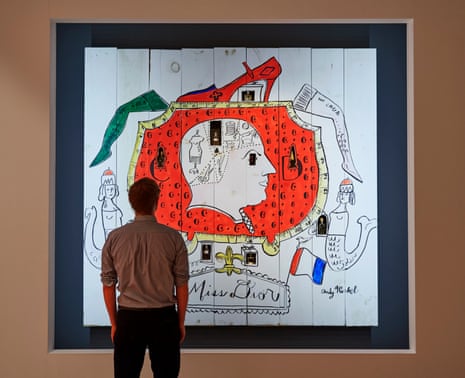It’s usually one line in the bio, a footnote in his history, but Andy Warhol’s early career as a commercial illustrator is the subject of a new exhibition at the Art Gallery of New South Wales: Adman – Warhol Before Pop.
Before he was a pop artist, Warhol was hot stuff on Madison Avenue. Advertising work made him rich enough to embark on a tour of south-east Asia and the Middle East (a rarity in 1956; his sketchbooks of the trip are in the exhibition), and renowned enough to sign all his commercial illustrations, just like a proper artist.
He was in early stages of the process which would define his career: unapologetically mixing art and commerce, to great success. And judging from the photos on display in the exhibition, he was happy too.
“He found New York at this incredible moment – the end of the 40s and start of the 50s, when ad land was on the rise,” says Nicholas Chambers, the exhibition curator. Warhol arrived in New York from his hometown of Pittsburgh in 1949, aged 20, with a degree in pictorial design. This was just before the Mad Men era, when Madison Avenue was poised to become a major cultural and economic force in American life.
Chambers has a deep knowledge of Warhol, and a particular appreciation of his early work. Before starting at the Art Gallery of NSW, he worked at the Andy Warhol museum in Pittsburgh, where the bulk of Warhol’s collection is housed. This exhibition in Sydney, which comprises 338 objects across five sections, is the most comprehensive collection of the artist’s early work since that museum opened in 1994.

Warhol never threw anything out, Chambers tells me, as we walk through the gallery where the art is being hung. “He was meticulous about keeping everything. He held on to all these things.” We walk past early paintings on paper, with folds down the middle. Other items Warhol kept include limited-editions books he made with writer friends (he would do the illustrations), and record covers he designed, decorated with his mother’s distinctive script.
Two shopfront windows will be recreated in the gallery, based on Warhol’s designs. The artist had many high-end clients, including Fifth Avenue department stores and Tiffany and Co, and some of his drawings are so elegant it makes much of the advertising around today look brutal by comparison.
But it is the distinctive blotted-line drawings that stand out in the collection.
In a precursor to the screen-printing techniques he would later use, the technique involved Warhol using ink and then blotting the image on another piece of paper. “The mono printing technique is a distinctive aspect of Warhol’s early work,” says Chambers. “You can make multiple images – but all are unique.”

During the 1950s, Warhol used this blotting technique to draw, among other things, whimsical illustrations of shoes. He was to become one of the most sought-after shoe illustrators of his era, and his very pretty drawings used to appear each week in an ad placed in the New York Times.
“Between 1955 and 1959, go to page 93 of the New York Times and there would be a large-format Warhol illustration, signed of course,” says Chambers. Back copies of the Times are part of the exhibition.
“One thing I think is really important for Warhol around this time is the interconnected practices – commercial art and fine art. In his last interview he said, ‘I was always a commercial artist.’ He was always crossing between high culture and low culture and doing it in a way that’s unashamed.”
Those who associate him only with the avant-garde forget he was a very skilled draftsman, Chambers says. “Drawing is at the heart of it. His work calls to mind a whole heap of influences including Matisse and Cocteau.”

Warhol’s Mad Men era ended, appropriately, with the start of the 1960s. “In 1961-62, it was a time of real transition; the time Warhol began to work on a concentrated body of paintings. They take as their subject matter the advertising industry – he recontextualises it as an artist.”

Comments (…)
Sign in or create your Guardian account to join the discussion